There are two inter-related questions regarding the history of the development of aikido:
- Does aikido owe anything to Yagyu Shingan-ryu, a classical martial tradition that Ueshiba Morihei studied before entering Daito-ryu?
- How much did Ueshiba Morihei take from Daito-ryu in creating his art?
Part I: Ueshiba’s Koshinage
Is the koshinage of Ueshiba Morihei his creation, is it rooted in Daito-ryu, or did he assimilate it from one of the other martial arts he previously studied?
Ueshiba’s koshinage is unique, at least in comparison to most ‘hip throws,’ as nage aligns his hips to the front of uke’s abdomen forming a ‘cross.’ (In Japanese this configuration is referred to using the Japanese kanji juji (十) for the number ten.)
The throw is effected by nage rotating his hips while shifting his weight from the leg closest to uke to the leg furthest away, combined with the use of gravity. The result is uke moves across nage’s loins and lower back, much like a seesaw on its fulcrum, with uke being thrown out and away from nage.
Saito Morihiro, who trained with Ueshiba longer than any other direct student, reinforces these points: “Step forward and position your right foot between your partner’s feet. Extend your left arm diagonally upward with feeling of pointing at the top corner of the wall and bring your partner’s stomach onto the small of your back in such a way that your two bodies form a cross.” (1)
The overall effect of this technique is a hip throw that exploits the action of uke and gravity, resulting in little energy expenditure by nage, something Saito confirms, reminiscing, “The founder once said jokingly that there were no better technique than koshinage and that he never got tired, even if he practiced it from morning to night.” (2)
Additionally, Saito explained that Ueshiba favored the koshinage of aikido over hip throws found in judo and other similar techniques, because koshinage as performed by Ueshiba affords nage the ability to move in any direction to address another attacker at any point of the technique.
Analyzing Ueshiba’s Koshinage Using Kuzushi, Tsukuri and Kake
Kano Jigoro, the brilliant academic and founder of Kodokan judo, believed every effective combative technique has three phases: kuzushi, tsukuri, and kake.
- Kuzushi is the breaking of uke’s balance, creating a clear state of disequilibrium relative to nage. Kano stated in Kodokan Judo that the basis of kuzushi is either pushing and pulling uke by employing the whole body, or countering uke’s attempted kuzushi by nage giving way (ju), resulting in the disruption of uke’s equilibrium.(For aiki arts, the definition should be expanded to include creating a state of disequilibrium through turning when pushed, and entering when pulled.)
- Tsukuri is moving one’s body into position to effect the technique after uke is in a state of disequilibrium.
- Kake is the execution of the technique. (4)
In the case of Ueshiba’s koshinage, the thrower (nage):
Kuzushi – nage utilizes uke’s action and/or reaction to create uke’s state of disequilibrium.
Tsukuri – nage aligns his or her feet on a line so that his/her loins contact the front of uke’s abdomen, below uke’s center of mass, forming a cross with their bodies. Nage lowers by opening his inguinal fold on both sides of his hip, and bending the knee of his leg closest to uke, while extending his arm toward the corner of the ceiling, resulting in uke being extended onto nage’s loins.
Kake – nage rotates uke’s body, using his/her extended arms to stretch uke over his/her loins. The loins function as a fulcrum to throw uke with a seesawing motion. The rotation is facilitated by a transfer of nage’s weight from the foot closest to uke to the foot furthest, all aided by gravity, resulting in uke being thrown in an arc away from nage, landing along the original line of engagement.
Identifying the Potential Source of Ueshiba’s Koshinage
During an interview, Ueshiba listed the martial arts he studied as, “Tenjin Shinyo-ryu from Tokusaburo Tozawa, then Kito-ryu, Yagyu-ryu, Aioi-ryu, and Shinkage-ryu, all of them jujutsu forms.” (5) (NOTE: He describes his training in Daito-ryu elsewhere in this interview).
Ellis Amdur in Hidden in Plain Sight, Tracing the Roots of Ueshiba’s Power, clarifies Ueshiba’s statement regarding his jujutsu training. Based upon Amdur’s analysis of historical records, the progression of Ueshiba’s training began with Tenjin Shinyo-ryu, which Amdur believes was followed by ‘old school’ judo that Ueshiba, like many, identified as Kito-ryu to differentiate the training from modern judo (which focuses on competition, something anathema to Ueshiba). Next, while in the Japanese military, Ueshiba studied Yagyu Shingan-ryu taijutsu. Amdur notes the reference by Ueshiba to Aioi-ryu appears to refer to a period of the development his own martial art, a transitional period between Daito-ryu and aikido, and Shinkage-ryu is probably a reference to a menkyo given to Ueshiba by Takeda Sokaku for symbolic reasons. (6)
If Ueshiba’s koshinage is derived from one of the arts studied, then it would have to be found in one or more of the following jujutsu schools: Tenjin Shinyo-ryu, Kodokan judo, Yagyu Shingan-ryu taijutsu, or Daito-ryu.
Examining the Candidates
Tenjin Shinyo-ryu
A thorough review of available images and video of Tenjin Shinyo-ryu failed to reveal any use of hip throws. The video review did reveal the use of a variety of throwing techniques that would fall within the category of osoto-gari, ippon-seoinage, sukuinage, and obiotoshi, etc., all of which are found within the curriculum of Kodokan Judo. Since Tenjin Shinyo-ryu was one of the two jujutsu schools that Kano Jigoro studied in depth, the other being Kito-ryu, it can be expected any hip throw in Tenjin Shinyo-ryu would appear in the technical corpus of Kodokan Judo. Tenjin Shinyo-ryu can therefore be eliminated as a source .
Kodokan Judo
The hip throws of modern Kodokan judo can be classified as full-hip or half-hip throws based upon the degree of hip-insertion by nage.
In half-hip throws, nage pulls uke to him, places his right arm on the back of uke’s waist, while bending with the back of his right hip. Nage’s right knee is bent and his right foot is within the feet of uke. Nage’s left leg is straight with the foot outside of uke’s feet. Nage throws uke by twisting his hips to the left, while drawing uke forward with his right arm.
For full-hip throws, nage draws uke to him. Nage turns placing his right arm around uke’s rear waist with his waist touching the front of uke’s abdomen. Nage’s knees are bent and his feet are within the feet of uke. Nage throws uke over his hip using the coordinated pulling (hikite) and pushing/lifting (tsurite) action of his arms combined with the straightening of his knees.
In the half-hip throws, nage rides uke on and around his hip, using the pulling and lifting actions of his arms, coordinated with a flicking action of his hips, while in the full hip throws nage lifts uke using the combined action of his legs and arms to rotate uke over his hip. (7)
Examples of full-hip throws are ogoshi and tsurikomigoshi, while ukigoshi is representative of the half-hip throw. (Notice the varying degrees of hip insertion in the following illustrations) (8)
Illustrations: Kodokan Judo Hip Throws
Ukigoshi was the favorite technique of Kano Jigoro, the founder of Kodokan judo. Kano is on the left in the photograph executing ukigoshi. (9)
Both the full hip and the half-hip throws of Kodokan Judo differ significantly from Ueshiba’s koshinage with respect to kuzushi, tsukuri, and kake.
- Ueshiba creates and maintains kuzushi by extending his arms, thereby extending uke’s body, as opposed to the hip throws of Kodokan judo, wherein nage draws uke to him, wrapping uke tightly to his body with the pulling action of his arms.
- In Ueshiba’s koshinage, his feet and uke’s feet form a “T,” while in Kodokan judo, nage’s feet are generally inside of and parallel to those of uke.
- Lastly, in Ueshiba’s koshinage his hips function as a fulcrum – like the pivot point of a seesaw – over which uke’s extended body rotates. In the hip throws of Kodokan judo, uke is bound to nage’s hips, which function as an axle, around which uke’s body is turned like a wheel, resulting in uke being thrown in front of nage, landing across or at an angle to the line of engagement.
Another hip throw in Kodokan Judo is koshiguruma. The currently practiced form of koshiguruma found in Kodokan judo conforms to the positioning of the full hip throws, and is very similar to ogoshi, with the exception that in koshiguruma the arm wraps around uke’s neck, rather than uke’s back as in ogoshi.
There is one outlier throw, antecedents unknown, within the corpus of Kodokan judo–this is koshiguruma in its original form, also referred to as jujigoshi. This technique is very close in appearance to the koshinage of Ueshiba, with the hips of nage form a right angle with the line connecting the feet of uke, with uke and nage’s bodies forming a cross. However, in the Kodokan’s version, nage wraps uke around his body, and uses the legs to lift and throw uke, resulting in uke being thrown in front of nage landing at an angle to the line of engagement. Nage’s actions in koshiguruma (jujigoshi) are substantially different from the throwing action of Ueshiba’s koshinage. (10)
Daito-ryu
Within the technical corpus of Daito-ryu, two hip throws appear within the Hiden Mokuroku. Koshiguruma is the term applied to both techniques. However, the two throws have very different mechanisms for effecting the techniques. (11)
- The first koshiguruma appears in the ikkajo series, and is a counter to jujijime (cross choke). Nage’s method of entry, involves a cross-step and pivot, which is the same entry used by Kano in performing ukigoshi. The execution of the throw is the similar to the ukigoshi of Kodokan judo, resulting in uke being thrown at the feet of nage. (12) (See Kondo Katusyuki, part 5: a demonstration of koshiguruma from the ikkajo series)
- The second koshiguruma appears in the nikajo series of the Hiden Mokuroku, and is a response to a yokomen attack. Nage enters and turns, as uke strikes yokomen with his right hand. Nage traps uke’s right arm with his left arm, and uke’s right leg, with his right arm, loading and binding uke across his hips. Nage straightens his legs, lifting uke and turning, before dropping uke to nage’s direct rear. The version of koshiguruma lacks the extension of uke as in Ueshiba’s koshinage, and requires lifting to affect the technique. Additionally, nage enters with a double, turning step, continuing the turning of his body with uke extended across the hip, resulting in uke being thrown behind nage. (Both koshinage variations can be seen in Kondo Katusyuki Daito Ryu Aikijujutsu)
A Candidate Within Yagyu Shingan-ryu Taijutsu
There is a technique within Goto-ha Yagyu Shingan-ryu, a martial tradition that Ueshiba studied for approximately four years, seen in this video, that appears to conform to all elements of Ueshiba’s koshinage. (The technique appears at the end of the first set of techniques, performed by the late sōke, Mutoh Masao, beginning at 1:40 and concluding at 1:46). A high ranking practitioner of Yagyu Shingan-ryu taijutsu identified this technique as Kinukatsugi, from the fifth Yawara kata in a set of five fundamental forms known as omote. He states: “In brief, the attacker grabs the defender’s clothing at the neck and delivers an overhead strike with the right hand. The defender blocks the attack with his left arm, taking hold of the attacker’s left wrist and pivoting it downward, whilst applying a painful grip. The defender’s right hand then extends over the attacker’s left arm and grabs his clothing at the neck, driving a raised knuckle into the attacker’s throat. The defender sinks his body weight, collapsing the attacker’s outstretched arm, and takes three steps forward, pushing the attacker backward. The defender then rotates under his right arm and draws his elbow to his chest, ensuring the attacker is snug on the hip, fastened by the chokehold. He then throws the attacker over his hip using his right hand to pull and his left hand to sweep the attacker’s left leg.” (13)
My informant was also kind enough to provide the following information regarding lineage. The 6th soke of Yagyu Shingan-ryu taijutsu was Goto Yagyusai (hence the name, Goto-ha for this faction of the tradition). While Goto appointed Ohshima Masateru the role of 7th soke prior to his death, other shihan continued to disseminate the tradition as well, Masanosuke Tsuboi passing it on to Nakai Masakatsu. Ueshiba attended Nakai’s dojo in Kaimachi, Sakai City (near Osaka). Both the names of Nakai Masakatsu (the dojo master) and Masanosuke Tsuboi (senior instructor) appear on Ueshiba’s shoden menkyo. (14) In this light, consider this photograph of Ueshiba Morihei, also from the set of the Noma Dojo, clearly the same technique as Kinukatsugi.
A Comparison of Hip Throws Among Ueshiba’s Studies
| HIP THROWS | Kuzushi | Tsukuri | Kake | |||||||
| Uke’s Action
Or Reaction |
Extends Uke’s Body | Uke & Nage’s Feet Form “T” | Uke Lies Across Nage’s Loins Forming
Cross |
Uke Is Thrown Away From Nage Along Line of Attack | ||||||
| YES | NO | YES | NO | YES | NO | YES | NO | YES | NO | |
| Aikido | X | X | X | X | X | |||||
| Yagyu Shingan-ryu | X | X | X | X | X | |||||
| Tenshin Shinyo-ryu | N/A | N/A | N/A | N/A | N/A | |||||
| Kodokan judo | X | X | X | X | X | X | X | |||
| Daito-ryu | X | X | X | X | X | X | ||||
Thoughts on the Relationship of the Koshinage of Aikido and the Kinukatsugi of Yagyu Shingan-ryu
Some have questioned the length and depth of Ueshiba’s training in Yagyu Shingan-ryu taijutsu and the validity of his shoden certificate. The rank certificate issued to Ueshiba by Yagyu Shingan-ryu taijutsu remains in the possession of the Ueshiba family. It lacks a seal, raising a question regarding its validity. However, the Ueshiba certificate does bear the names that one would expect on a valid Yagyu Shingan-ryu taijutsu shoden certificate, and there is independent testimony and documentation that Ueshiba studied the art during the four years that he was in the Japanese military.
Kinukatsugi is one of the five kata forming the Omote set – the first set of in curriculum of the ryu. While the actual amount of Ueshiba’s tutelage and training in Yagyu Shingan-ryu taijutsu is uncertain, presuming Ueshiba attended training at least once each month over four or five years, he surely assimilated the first set of five kata!
The connection of kinukatsugi and Ueshiba’s koshinage establishes a tangible link between his martial art and Goto-ha Yagyu Shingan-ryu, demonstrating the influence of a predecessor art other than Daito-ryu in the creation of aikido.
In addition, it demonstrates that Ueshiba in formulating the technical corpus of aikido, did not simply pare down the number and simplify Daito-ryu techniques, as many have asserted. Rather, he systematically adopted and adapted techniques, albeit mostly from Daito-ryu, which he believed to have the potential to transmit the essential principles of his art.
The Value of Koshinage in Aikido
Another important aspect of Ueshiba’s koshinage, pointed out by Ellis Amdur in our discussions, is the relationship of this technique and kokyunage–nearly all variations of Ueshiba’s koshinage easily transform into kokyunage. Conversely, with a slowing of overall tempo of engagement, virtually all kokyunage can be easily transform into a koshinage. (15) We both believe that Ueshiba did not include koshinage in aikido merely to provide an ‘exercise in connection’ or ‘for training ukemi’ as some teachers explain. The technique does have a credible, combative application, as revealed in the bunkai of kinukatsugi. The koshinage of aikido also provides an effective, fundamental tool for developing blending skills, and the ability to generate and transfer power using the hips. (16)
I also believe the current trend of a decreasing ability of many aikidoka to generate and project power in kokyunage is attributable to a lack of diligent koshinage training. I am also concerned of the long term negative effects on aikido due to the number of various aikido instructors who no longer consider this to be a basic technique of aikido. I further believe that those who have abandoned Ueshiba’s koshinage in favor of ‘more effective’ koshinage adopted from other grappling arts, predominantly judo, are not doing aikido a ‘service.’ Ueshiba’s koshinage contributes to the overall development of aikido skills–judo hip-throws, however valuable they are in their own right, do not.
The Koshinage of Kuroiwa Yoshio
To really understand the full scope of Ueshiba Morihei’s own methodology, it is necessary to return to the early books published directly under his purview, most notably Budo Training in Aikido. (17) There are several techniques, no longer practiced, which really emphasize a ‘head down’ entry into a full shoulder/hip throw. Most notably ‘Technique #110 (18) and Technique #96 (19). These techniques seem to have been independently rediscovered by Kuroiwa Yoshio, an iconoclastic post-war student of Ueshiba Morihei (see the last one minute, fifteen seconds of this video).
In Technique ’96,’ the attack is ryotedori, uke’s two hands grasping nage’s wrists. Nage ducks his head below uke’s center of gravity by bending at the waist, while drawing uke directly onto his back. The throw occurs as a combination of nage drawing uke forward, while returning to an erect stance, combined with the effect of gravity on uke’s body, resulting in uke being thrown directly to the rear of nage.
According to Ellis Amdur, Kuroiwa independently developed both of his koshinage variations while working with members of the wrestling team at Rikkyo University, basing it on ‘single-leg takedown’ entries. Amdur also pointed out Kuroiwa proved his koshinage in combat by throwing a yakuza, who was an amateur sumo yondan several times, when the gangster was attempting to disrupt the dojo of one of his friends. Kuroiwa informed Amdur that at least two high-ranking shihan told Kuroiwa to cease performing his version of koshinage. Kuroiwa’s response was to the effect he would stop if instructed to do so by Ueshiba Morihei. Based upon the description of the techniques recorded in Budo Training in Aikido, it is no surprise no such instruction was ever forthcoming from Ueshiba. (20)
Part II: The Relationship of Aikido and Daito-ryu Waza
Background
Notwithstanding the first section of this essay, almost all of the techniques forming the physical basis aikido are derived from Daito-ryu. Ueshiba changed the techniques to conform to his vision for aikido as both a martial art and a spiritual pursuit, sometimes framed as a ‘way of peace’ or ‘way of reconciliation.’ In modifying the Daito-ryu techniques, Ueshiba relied heavily on his philosophical and spiritual beliefs for guidance, as well as his other studies, including sword and spear.
Examining the Daito-ryu techniques adopted and adapted by Ueshiba will provide at least two benefits for the aikido student.
- First, it will provide a greater appreciation of the brilliance displayed by Ueshiba in creating aikido, building upon the genius of Sokaku Takeda.
- Second, the aikido student will develop a better understanding of the technical origins of the art and the nature of the changes made by Ueshiba.
There have been a variety of articles comparing and contrasting, in general, the techniques of Aikido and Daito-ryu, but I have been unable to find any previous article presenting a one-to-one correlation of the techniques forming the technical body of these arts, something I will do here. (21)
Observations on the Relationship of Aikido and Daito-ryu Techniques
In beginning my research, I decided to use readily available, commercial reference material for the study (it is therefore, conceivable that further study will reveal even more links). For simplicity, aikido is represented by techniques as taught under traditions affiliated with the Aikikai, with Daito-ryu represented by the lineage of Takeda Tokumine, referred to as Daito-ryu Aikibudo. My selection does not imply any qualitative judgment with respect to the other branches of each art; rather they reflect the relative availability of reference material. I have also included a chart correlating Tomiki-ryu atemiwaza and Daito-ryu techniques, as atemiwaza in the Aikikai mainly appear in tachidori and jodori. (22)
Methodology
I first compiled a list of all techniques contained in Aikido and the Dynamic Sphere in order of appearance, and then crosschecked the list against the remaining aikido reference material. The crosscheck resulted in the addition of several aikido techniques that are not included in Ratti and Westbrook’s work.
A similar listing was made of all techniques contained in the Daito-ryu reference material. Emphasis was placed upon identifying the techniques contained in the Daito-ryu Hiden Mokuroku.
After compiling the list of aikido techniques, I examined the Daito-ryu reference material to identify the techniques that appear related to each of the aikido techniques. I then collated the results of the reviews.
Notes on Techniques
- I have identified the Daito-ryu techniques of gyaku-udedori, tate-eridori, and daki-jimedori as corresponding to both Immobilization No. 1 – ikkyo and Immobilization No. 2 – nikyo. The correspondence is based upon comments by Antonino Certa, a yondan (4th dan) in aikido and Daito-ryu shihan, and Saito Morihiro, an aikido 9th Dan. Certa identifies ippondori, gyaku-udedori, and similar techniques in the ikkajo series of Daito-ryu as being the same as the ikkyo of aikido. (23) Saito Morihiro has noted there is a difference between ikkyo omote and nikyo omote. In ikkyo omote, pressure is not applied to the back of uke’s hand when tori grips the back of uke’s hand as in katatedori ikkyo omote. Conversely in nikyo omote pressure is applied to the back of uke’s hand. (24) Similar comments have been made by other aikido shihan, as oral instruction. Therefore, I have identified gyaku-udedori, tate-eridori, and daki-jimedori as related to both aikido techniques.
- I have identified the Daito-ryu techniques of kirikaeshi, ryokatahineri, ryohijigaeshi, and obiotsohi of the Ikkajo series and susobarai of the Nikajo series as related to Projection No. 2 – iriminage (kokyunage, sokumen-iriminage) also based upon commentary by Antonino Certa. (25)
- I have also shown the Daito-ryu Ikkajo series techniques of kirikaeshi, ryokatahineri, and ryohijigaeshi as related to gedanate of Tomiki-ryu, due to the obvious correspondence to the Tomiki-ryu technique.
- Based upon the comments of Takeda Tokumine, tenchinage of Aikido is identified as being a technique contained in the aikinage series of Daito-ryu. (26)
- I have identified koshinage of aikido as related (not identical) to koshiguruma, a technique appearing in the ikkajo, nikajo and nikajo uragata series of Daito-ryu, based upon the statement of Takeda Tokumine. (27) Likewise, I have identified koshinage of aikido as related to seoinage, due to the commentary of Antonino Certa. (28) However, for reasons detailed previously in this article, I believe Yagyu Shingan-ryu taijutsu was the source of Ueshiba’s koshinage – not Daito-ryu. I do see koshiguruma and several other techniques contained in the Daito-ryu Hiden Mokuroku, as well as judo koshiwaza, as possible sources of techniques incorporated as koshinage into aikido as the art has evolved beyond Ueshiba Morihei’s direct control.
- I have also identified the Daito-ryu sankajo technique of ganseki-otoshi to the aikido technique by the same name, because of its technical commonality with seoinage and koshiguruma of the nikajo series.
- Based upon a comment of Kondo Katusyuki, I have identified gokyo of Aikido as derived from an unidentified technique included in the gokajo series of Daito-ryu. (29) It is interesting to note that Ueshiba Morihei originally identified the technique in BUDO as a variant of dai‘ippo, also known as ikkyo (udeosai).
- The kataguruma demonstrated on the referenced DVD prepared under the direction of Kondo Sensei appears to be technically close to Projection 12 in Aikido and the Dynamic Sphere.
- My review of public demonstrations featuring Kondo, included on Kondo Katusyuki Daito-Ryu Aikijujutsu, revealed techniques identical to Projection No. 3 – kaitennage, Projection No. 8 – kokyunage, Projection No. 22 – kokyunage, and Projection No. 28 – aikinage, as well as ushiro-ate from Tomiki-ryu aikido. I suspect these techniques are from the Aikinage Mokuroku, and have identified them that way.
- I have included all arm locks taught in aikido using pressure to hyperextend the elbow joint under the general heading of udehishigi. The most common version of the elbow joint lock is udehishigi-wakigatame, also referred to as roppyo or hijishime.
- Although not appearing in either Aikido and the Dynamic Sphere or the books by Ueshiba Kisshomaru and Ueshiba Moriteru, I have included under the aikido immobilizations, a technique referred to in the Iwama tradition of aikido as nanakyo (hijigatame), as numerous senior Aikido instructors teach the technique both as a kokyunage and as a knife defense. I understand Daito-ryu practitioners refer to the same technique as temakura. For similar reasons, I have also included kubinage in the charts, as numerous senior aikido instructors teach the technique as a kokyunage.
- Lastly, I did not list those Daito-ryu ikkajo uragata and nikajo uragata techniques, which have no substantive difference from the corresponding techniques in the Hiden Mokuroku standing techniques.
CORRELATION OF AIKIDO AND DAITO-RYU TECHNIQUES
How to Read the Correlation
Initial entries are aikido techniques. They will be highlighted in THIS color. Bullet-pointed entries below this are Daito-ryu.
The first entry is the reference for the technique as it appears in Aikido and the Dynamic Sphere. The second entry is term used by the Aikikai to identify the technique. Any parenthetical entry provides other terms in common use to describe the technique within the aikido community. The related Daito-ryu techniques are grouped by series (ikkajo, nikajo, etc.), within the Hiden Mokuroku, (Note: A number of aikido techniques do not appear to have a related technique within the Hiden Mokuroku.)
Immobilizations
Immobilization No. 1 – Ikkyo (udeosae, oshitaoshi)
- Ikkajo: ippondori, gyaku-udedori, tate-eridori, daki-jimedori, nukitedori
Immobilization No. 2 – Nikyo (kotemawashi)
- Ikkajo: gyaku-udedori, tate-eridori, daki-jimedori, nukitedori
- Nikajo: kotezume, shutozume, gyakugote, kamatezume
- Sankajo: sotogote, uchi-udegaeshi
- Yonkajo: temakurazume
- Ikkajo Uragata: tachi-eridori
Immobilization No. 3 – Sankyo (kotehineri)
- Nikajo: konohagaeshi, irimizume
- Sankajo: tsuriotoshi, makizume, katahagaeshi, wakizume, makizumeotoshi, kiriha
- Yonkajo: wakizumeotoshi
- Gokajo: kobangaeshi
Immobilization No. 4 – Yonkyo (tekubiosae)
- Sankyo: gasshodori
- Yonkajo: uragote, uchigote
Immobilization No. 5 – Gokyo (udenobashi)
- Gokajo (See explanation above in ‘Notes on Techniques’)
Immobilization No. 6 – Shihonage (tenkaikotegaeshi)
- Ikkajo: shihonage (omote & ura), iriminage, hanminage
- Sankajo: shihonage (omote & ura), ipponkatsugi
- Yonkajo: kasuminage
- Ikkajo Uragata: shihonage
- Nikajo Uragata: kotegaeshi
Immobilization No. 7 – Kotegaeshi
- Ikkajo: kotegaeshi
- Nikajo: kotegaeshi
- Sankajo: udegaeshi, kobushigaeshi
- Ikkajo Uragata: kotegaeshi
Ude Hishigi (roppyo, hijishime, hijikime, wakigatame, haragatame)
- Nikajo: hijikujiki, katahadori
- Sankajo: shichiribiki, kakaekujiki, hijikujiki, wakigarami, wakikujiki
- Yonkajo: wakidori-omote, wakidori-ura
- Gokajo: makikomikujiki, enma
- Ikkajo Uragata: ippondori
Nanakyo (hijigatame)
- Sankajo: temakura
Projections
Projection No. 1 – Iriminage (kokyunage)
- Nikajo: gyakudasuki
- Ikkajo Uragata: ryokatahineri
- Nikajo Uragata: gyakudasuki
Projection No. 2 – Iriminage (kokyunage, sokumeniriminage)
- Ikkajo: kirikaeshi, ryokatahineri, ryohijigaeshi, obiotoshi
- Nikajo: susobarai
- Ikkajo Uragata: kirikaeshi
- Nikajo Uragata: seoinage
Projection No. 3 – Kaitennage
- Technique in Aikinage Mokuroku*
Projection No. 4 – Koshinage (see explanation above in ‘Notes on Techniques’)
- Ikkajo: koshiguruma
- Nikajo: koshiguruma, seoinage
- Sankajo: gansekiotoshi
- Nikajo Uragata: koshiguruma
Projection No. 5 – Aikiotoshi (sukuinage)
- Nikajo: sukuinage
Projection No. 6 – Kokyunage
- Ikkajo: shimegaeshi
- Technique in Aikinage Mokuroku*
Projection No. 7 – Kokyunage
- No Identifiable Correlation
Projection No. 8 – Kokyunage
- No Identifiable Correlation
Projection No. 9 – Tenchinage
- Technique in Aikinage Mokuroku*
Projection No. 10 and 11 – Sumiotoshi
- Ikkajo: karumadaoshi, ura-otoshi
- Nikajo: hijikujiki (idori)
- Yonkajo: ura-otoshi
- Ikkajo Uragata: ura-otoshi
Projection No. 10 Attack No. 5 – Hijiate
- Sankajo: kata-udeuage
- Yonkajo: irichigai
- Nikajo Uragata: tsukitaoshi
Projection No. 12 – Kokyunage
- Nikajo: kataguruma
- Yonkajo: senryu
Projection No. 13 – Kokyunage
- No Identifiable Correlation
Projection No. 14 – Kokyunage
- Ikkajo Uragata: kataotoshi
Projection No. 15 – Kokyunage
- No Identifiable Correlation
Projection No. 16 – Kokyunage
- No Identifiable Correlation
Projection No. 17 – Jujigarami (jujinage)
- Ikkajo: karaminage
- Sankajo: karamizume
- Yonkajo: Daruma Gaeshi
Projection No. 18 – Kokyunage
- No Identifiable Correlation
Projection No. 19 – Kibisugaeshi
- Nikajo: susodori
- Sankajo: ashijime
Projection No. 20 – Kokyunage
- No Identifiable Correlation
Projection No. 21 – Kokyunage
- No Identifiable Correlation
Projection No. 22 – Kokyunage
- Technique in Aikinage Mokuroku*
Projection No. 23 – Kokyunage
- No Identifiable Correlation
Projection No. 24 – Kokyunage
- Ikkajo: izori
- Yonkajo: izori
Projection No. 25 – Kokyunage (Omote)
- Nikajo: hikiotoshi
Projection No. 26 – Kokyunage
- No Identifiable Correlation
Projection No. 27 – Kokyunage
- No Identifiable Correlation
Projection No. 28 – Aikinage (sudori)
- Technique in Aikinage Mokuroku*
- kubinage (mennage) ≈
- Nikajo: kubinage, kubihineri
Tomiki-ryu atemiwaza
Shomen-ate
- Ryoeridoriryu no agito**
Aigamae-ate
- Nikajo: tsukitaoshi, hijikujiki (idori)
Gyakugamae-ate
- Ikkajo: kirikaeshi, ryokatahineri, ryohijigaeshi
- Nikajo: susobarai
- Ikkajo Uragata: kirikaeshi
- Nikajo Uragata: seoinage
Gedan-ate
- Ikkajo: kirikaeshi, ryokatahineri, ryohijigaeshi
Ushiro-ate
- Technique in Aikinage Mokuroku*
Notes on Correlations
I would anticipate the identification of further correspondence between Daito-ryu techniques and the many kokyunage of Aikido, as catalogued in Aikido and the Dynamic Sphere, as additional Daito-ryu material becomes available, specifically the Aikinage Mokuroku. As I developed the correlations as a research tool to identify comparable techniques of aikido and of Daito-ryu, I will welcome input regarding any omission or error.
- Technique in Aikinage Mokuroku* – Techniques in the Aikinage mokuroku have no individual identifiers.
- Ryoeridoriryu no Agito** – The technique is an applied version of Tomiki-ryu shomen-ate. While I did not find a technique in Daito-ryu Aikibudo corresponding to shomen-ate, I did locate one, ryote-eridoriryu no agito, in The Hiden Roots of Aikido, Aiki Jujutsu Daito Ryu by Omiya Shiro, and have included it in the chart. Omiya studied Daito-ryu under the instruction of Tsuruyama Kozui, who was a student of Hisa Takuma. Hisa studied with both Ueshiba Morihei and Takeda Sokaku .
- The fact many aikido techniques, for example shihonage, appear under different names in Daito-ryu is confirmed by Kondo Katusyuki in a video appearing on YouTube, during which he explains there are several different shihonage techniques in the Hiden Mokuroku. (See “Daito-ryu Aikijujutsu – Shihonage with a Sword.” The statement is made at approximately three minutes and thirty-nine seconds into the video.)
A Final Observation
It is interesting to note the correlation reveals 97 of the 118 Hiden Mokuroku techniques, approximately 82%, appear in aikido as either primary techniques or a variation of a primary technique
| Daito-ryu Hiden Mokuroku (118 Techniques) | ||||||
| Aikido/
Ikkajo |
Aikido/
Nikajo |
Aikido
Sankajo |
Aikido/
Yonkajo |
Aikido/
Gokajo |
||
| Idori | 7/10 | 10/10 | 10/10 | |||
| Hanza Handachi | 4/5 | 5/5 | 5/5 | |||
| Tachiai | 10/10 | 9/10 | 9/10 | 12/15 | 3/13 | |
| Ushirodori | 4/5 | 4/5 | 5/5 | |||
| Total Correspondence | 25/30 | 28/30 | 29/30 | 12/15 | 3/13 | TOTAL
97 out of 118 |
Appendix I – The Correlation from the ‘Perspective’ of Daito-ryu
The first entry identifies the Daito-ryu techniques, grouped by set (Ikkajo, Nikajo, etc.), within the Hiden Mokuroku, and the Ikkajo and Nikajo Uragata. I have not differentiated idori, hanzahandachi, and tachiai utilizing the same term. The Daito-ryu entry with be in BLUE color
The entry to the right of the equal sign identifies the related aikido technique. The first entry is the reference for the technique as it appears in Aikido and the Dynamic Sphere. The second entry is the term used by the Aikikai to identify the technique. Any parenthetical entry provides other terms in common use to describe the technique.
I have ALSO included Daito-ryu techniques not contained in the Hiden Mokuroku that appear related to Aikido techniques.
IKKAJO
- Ippondori = Immobilization No. 1 – ikkyo
- Kurumadaoshi = Projections No. 10 and 11 – sumiotoshi
- Gyakuudedori = Immobilization No. 1 – ikkyo, Immobilization No. 2 – nikyo
- Koshiguruma = Projection No. 4 – koshinage
- Karaminage = Projection No. 17 – jujigarami
- Uraotoshi = Projections No. 10 and 11 – sumiotoshi
- Obiotoshi = Projection No. 2 – iriminage (kokyunage, sokumeniriminage)
- Kirikaeshi = Projection No. 2 – iriminage (kokyunage, sokumeniriminage)
- Kotegaeshi = Immobilization No. 7 – kotegaeshi
- Shihonage (omote & ura) = Immobilization No. 6 – shihonage
- Shimegaeshi = Projection No. 6 – kokyunage
- Nukitedori = Immobilization No. 1 – ikkyo, Immobilization No. 2 – nikyo
- Hanminage = Immobilization No. 6 – shihonage
- Izori = Projection No. 24 – kokyunage
- Iriminage = Immobilization No. 6 – shihonage
- Tachieridori = Immobilization No. 1 – ikkyo, Immobilization No. 2 – nikyo
- Ryotekatahineri = Projection No. 2 – Iriminage, gyakugamaeate (kokyunage, sokumeniriminage)
- Ryohijigaeshi = Projection No. 2 – iriminage, gyakugamaeate (kokyunage, sokumeniriminage)
- Dakijimedori = Immobilization No. 1 – ikkyo, Immobilization No. 2 – nikyo
NOTES ON IKKAJO
- The idori versions of hijigaeshi, daki-jime, and hizajime do not appear to have a comparable aikido technique.
- The hanzahandachi and ushiro technique kataotoshi does not appear to have a comparable aikido technique.
- The technique kataotoshi appearing in the hanza-handachi and ushiro groups appear to be the same as ippon-seoiotoshi of Kodokan judo.)
NIKAJO
- Gyakudasuki = Projection No. 1 – iriminage (kokyunage)
- Hikiotoshi = Projection No. 25 – kokyunage (omote)
- Kubinage = kubinage (mennage)
- Susobarai = Projection No. 2 – iriminage, gedanate (kokyunage, sokumeniriminage)
- Seoinage = Projection No. 4 – koshinage
- Shutozume = Immobilization No. 2 – nikyo
- Kotegaeshi = Immobilization No. 7 – kotegaeshi
- Kataguruma = Projection No. 12 – kokyunage
- Koshiguruma = Projection No. 4 – koshinage
- Kotezume = Immobilization No. 2 – nikyo
- Hijikujiki (idori) = Projections No. 10 and 11 – sumiotoshi, aigamaeate
- Konohagaeshi = Immobilization No. 3 – sankyo
- Kubihineri = kubinage (mennage)
- Katahadori = udeishigi (roppyo, hijishime, hijikime, wakigatame)
- Kamatezume = Immobilization No. 2 – nikyo
- Susodori = Projection No. 19 – kokyunage (kibisugaeshi)
- Hijikujiki = udehishigi (roppyo, hijishime, hijikime, wakigatame)
- Irimizume = Immobilization No. 3 – sankyo
- Tsukitaoshi = Ai Gamae Ate
- Sukuinage = Projection No. 5 – aikiotoshi
- Gyakugote = Immobilization No. 2 – nikyo
NOTE ON NIKAJO
- The tachiai technique seikujiki and the ushiro technique kubinage do not appear to have a comparable Aikido technique.
SANKAJO
- Tsuriotoshi ≈ Immobilization No. 3 – sankyo
- Sotogote ≈ Immobilization No. 2 – nikyo
- Makizume ≈ Immobilization No. 3 – sankyo
- Wakizume ≈ Immobilization No. 3 – sankyo
- Gansekiotoshi ≈ Projection No. 4 – koshinage
- Uchiudegaeshi ≈ Immobilization No. 2 – nikyo
- Shichiribiki ≈ udehishigi (roppyo, hijishime, hijikime, wakigatame)
- Ipponkatsugi ≈ Immobilization No. 6 – shihonage
- Shihonage ≈ Immobilization No. 6 – shihonage
- Temakura ≈ nanakyo – hijigatame
- Kobushigaeshi ≈ Immobilization No. 7 – kotegaeshi
- Kakaekujiki ≈ udehishigi (roppyo, hijishime, hijikime, wakigatame)
- Karamizume ≈ Projection No. 17 – jujigarami
- Kiriha ≈ Immobilization No. 3 – sankyo
- Gashodori ≈ Immobilization No. 4 – yonkyo (tekubiosae)
- Hijikujiki ≈ udehishigi (roppyo, hijishime, hijikime, wakigatame)
- Katahagaeshi ≈ Immobilization No. 3 – sankyo
- Ashijime ≈ Projection No. 19 (kibisugaeshi)
- Wakikujiki ≈ udehishigi (roppyo, hijishime, hijikime, wakigatame)
- Makizumeotoshi ≈ Immobilization No. 3 – sankyo
- Udegaeshi ≈ Immobilization No. 7 – kotegaeshi
- Wakigarami ≈ udehishigi (roppyo, hijishime, hijikime, wakigatame)
- Kataudeuage ≈ Projection No. 10 Attack No. 5 – hijiate
NOTE ON SANKAJO
- The tachiai technique seikujiki and the ushiro technique kubinage do not appear to have a comparable aikido technique.)
YONKAJO
- Uragote = Immobilization No. 4 – yonkyo
- Uchigote = Immobilization No. 4 – yonkyo
- Temakurazume = Immobilization No. 2 – nikyo
- Wakidoriomote = udehishigi (roppyo, hijishime, hijikime, wakigatame)
- Wakidoriura = udehishigi (roppyo, hijishime, hijikime, wakigatame)
- Irichigai = Projection No. 10 Attack No. 5 – hijiate
- Izori = Projection No. 24 – kokyunage
- Uraotoshi = Projections No. 10 and 11 – sumiotoshi
- Senryu = Projection No. 12 – kokyunage
- Wakizumeotoshi = Immobilization No. 3 – sankyo
- Kasuminage = Immobilization No. 6 – shihonage
- Darumagaeshi = Projection No. 17 – jujigarami
NOTE ON YONKAJO
- The yonkajo techniques kakaekubi, tatsumaki, and hadakajime do not appear to have a comparable aikido technique.
GOKAJO
- Makikomikujiki = udehishigi (roppyo, hijishime, hijikime, wakigatame)
- Kobangaeshi = Immobilization No. 3 – sankyo
- Enma = udehishigi (roppyo, hijishime, hijikime, wakigatame)
NOTE ON GOKAJO
The Gokajo techniques kannukizume, shumoku and takiotoshi do not appear to have a comparable aikido technique. Additionally, I could only locate six of the thirteen techniques contained in the Gokajo series on video.
IKKAJO URAGATA
- Ippondori = udehishigi (roppyo, hijishime, hijikime, wakigatame)
- Kurumadaoshi = Immobilization No. 7 – kotegaeshi
- Uraotoshi = Projections No. 10 and 11 – sumiotoshi
- Kirikaeshi = Projection No. 2 – iriminage, gyakugamaeate (kokyunage, sokumeniriminage)
- Kotegaeshi = Immobilization No. 7 – kotegaeshi
- Shihonage = Immobilization No. 6 – shihonage
- Tachieridori = Immobilization No. 2 – nikyo
- Ryokatahineri = Projection No. 1 – iriminage
- Kataotoshi Projection No. 14 – kokyunage
NIKAJO URAGATA
- Gyakudasuki = Projection No. 1 – iriminage
- Seoinage = Projection No. 2 – Iriminage, gyakugamaeate (kokyunage, sokumeniriminage)
- Kotegaeshi = Immobilization No. 6 – shihonage
- Koshiguruma = Projection No. 4 – koshinage
- Tsukitaoshi = Projection No. 10 Attack No. 5 – hijiate
AIKINAGE
- Projection No. 3 – kaitennage
- Projection No. 6 – kokyunage
- Projection No. 9 – tenchinage
- Projection No. 22 – kokyunage
- Projection No. 28 – aikinage (sudori)
- Shomenate (Tomiki Ryu)
NOTE: Techniques in this series have no individual identifiers
FOOTNOTES
1) Saito Morihiro, Takemusu Aikido, Volume 3. Tokyo: Aiki News, 1996. 33
2) Stanley Pranin, “Interview with Saito Morihiro.” Aiki News, #88, Summer 1991
3) Images of O-sensei performing koshinage from the “Noma Dojo Techniques” are included in the following two publications: BUDO Teachings of the Founder of Aikido, 126, and The Essence of Aikido, 196-197.
4) Kano Jigoro, Kodokan Judo, 42-44
5) “Interview with Ueshiba Morihei and Ueshiba Kisshomaru.” Aiki News #18, August 1976. Goto ha Yagyu Shingan-ryu taijutsu is the proper name for the art referred to in the interview as Yagyu-ryu.
6) Amdur, Ellis, Hidden in Plain Sight, Tracing the Roots of Ueshiba’s Power.
7) Daigo Toshiro, Kodokan Judo Throwing Techniques: Kodansha International, 2005. 85-86
8) Illustrations and detailed explanations of the referenced judo nage waza are available at www.judoinfo.com
9) Kano Jigoro, Kodokan Judo: Kodansha International 1986. 63
10) Daigo Toshiro, Kodokan Judo Throwing Techniques. : Kodansha International, 112-113
11) Kondo Katusyuki, Daito-ryu Aikijujutsu Hiden Mokuroku Ikkajo. Tokyo: Aiki News, 2000. 65-69
12) The ukigoshi of modern Kodokan judo is normally performed by nage making entry using two distinct steps.)
13) Yagyu Shingan-ryu Taijutsu BAB Video Series, Video #66, (Tokyo: BAB Japan Company, Limited). A video of the Omote Forms, including kinukatsugi can also be viewed at Goto ha Yagyu Shingan Ryu Taijutsu I
14) The detailed description of this technique is from personal communication with representative of Yagyu Shingan-ryu, 19 February, 2008
15) Personal communication with Ellis Amdur
16) AIKI BUDO, Aikido Journal, contains the “1935 Asahi News Film.” The “1935 Asahi New Film” captures O-sensei in his prime performing numerous examples of kokyunage arising from koshinage.
17) Anyone interested in the aikido of Ueshiba prior to World War II would be well served by obtaining a copy of Budo Training in Aikido. The book was originally released in 1934, entitled Budo Renshu (Budo Training) with authorship attributed to Ueshiba Morihei. (His son, Ueshiba Kisshomaru later added “in aikido” to the title). The illustrations are the work of Kunigoshi Takako, with the text compiled with the input of Ueshiba and edited by Tomiki Kenji.
18) Ueshiba, Morihei. Budo Training in Aikido. (English Edition) Tokyo: Sugawara Martial Arts Institute/Japan Publications, 1997 143-144
19) Ueshiba, Morihei. Budo Training in Aikido. (English Edition) Tokyo: Sugawara Martial Arts Institute/Japan Publications, 1997 124-125
20) Personal communication, Ellis Amdur. For a detailed description of this remarkable, little-known man, see Chapter 5: “Forever Young” in Amdur’s Dueling with O-sensei: Grappling with the Myth of the Warrior Sage – Revised and Expanded Edition
21) Definition: correlation (noun) a mutual relationship or connection between two or more things.
22) The following were used as primary reference material for Aikido techniques.
- Aikido and the Dynamic Sphere by Adele Westbrook and Oscar Ratti
- AIKIDO by Ueshiba Kisshomaru
- Best Aikido, The Fundamentals by Ueshiba Kisshomaru and Ueshiba Moriteru
- The Aikido Master Course, Best Aikido 2 by Ueshiba Moriteru.
- Takemusu Aikido, Volumes 1 – 5, and Takemusu Aikido Special Edition: Commentary on Budo by Saito Morihiro
- Tomiki Aikido by Dr. Lee Ah Loi
The following were used as primary reference material for Daito-ryu techniques.
- Daito-ryu Aikijujutsu, Hiden Mokuroku Ikkajo by Kondo Katusyuki
- Kondo Katusyuki Daito-Ryu Aikijujutsu (Selected Techniques from Hiden Mokuroku – Ikkajo through Gokajo, and Goshin no Te) (DVD)
- Kondo Katusyuki Daito-ryu Aikijujutsu Ikkajo – Part 1 (DVD)
- Kondo Katusyuki Daito-ryu Aikijujutsu Ikkajo – Part 2 (DVD)
- Daito-Ryu Aikibudo, History and Technique by Antonino Certa
- Daito-ryu Aiki Ju-Jutsu Hiden Mokuroku 118 Jo, Volume 1 (Hiden Mokuroku Ikkajo and Hiden Mokuroku Nikajo) (DVD)
- Daito-ryu Aiki Ju-Jutsu Hiden Mokuroku 118 Jo, Volume 2 (Hiden Mokuroku Sankajo) (DVD)
- Daito-ryu Aiki Ju-Jutsu Hiden Mokuroku 118 Jo, Volume 3 (Hiden Mokuroku Yonkajo and Hiden Mokuroku Gokajo) (DVD)
- Daito-ryu Aiki Ju-Jutsu Hiden Mokuroku Ikkajo Uragata Volume 1 (DVD)
- Daito-ryu Aiki Ju-Jutsu Hiden Mokuroku Ikkajo Uragata Volume 2 (DVD)
- Daito-ryu Aiki Ju-Jutsu Hiden Mokuroku Nikajo Uragata Volume 1 (DVD)
- Daito-ryu Aiki Ju-Jutsu Hiden Mokuroku Nikajo Uragata Volume 2 (DVD)
23) Certa, Antonino. Daito-Ryu Aikibudo, History and Technique. (Milano: Luni Editrice.) p 71
24) Saito Morihiro, Takemusu Aikido, Volume 1 (Tokyo: Aiki News, 1996) p 100 & 131
25) Certa, Antonino. Daito-Ryu Aikibudo, History and Technique. (Milano: Luni Editrice.) p 71
26) Pranin, Stanley A. Daito-ryu Aikijujutsu. Tokyo: Aiki News, 1996. p 52
27) Pranin, Stanley A. Daito-ryu Aikijujutsu. Tokyo: Aiki News, 1996. p 52
28) Certa, Antonino. Daito-Ryu Aikibudo, History and Technique. (Milano: Luni Editrice.) p 71
29) Pranin, Stanley A. Daito-ryu Aikijujutsu. Tokyo: Aiki News, 1996. p 157
BIBLIOGRAPHY – BOOKS
Certa, Antonino. Daito-Ryu Aikibudo, History and Technique. Milano: Luni Editrice, 2007.
Daigo, Toshiro. Kodokan Judo Throwing Techniques. Tokyo: Kodansha International, Limited, 2005.
Kano, Jigoro. Kodokan Judo. Kodansha International, Ltd. 1986
Kondo, Katsuyuki. Daito-ryu Aikijujutsu Hiden Mokuroku Ikkajo. Tokyo: Aiki News,
Lee, Ah Loi. Tomiki Aikido. London: Paul H, Compton, Ltd. 1978
Pranin, Stanley. “Interview with Saito Morihiro.” Aiki News, #88, Summer 1991.
Saito, Morihiro. Takemusu Aikido, Volume 3. Tokyo: Aiki News, 1996.
Stevens, John. The Essence of Aikido. Tokyo: Kodansha International, Limited, 1993.
Ueshiba, Morihei. BUDO. Tokyo: Kodansha International, Limited, 1991.
Ueshiba, Morihei. Budo Training in Aikido. (English Edition) Tokyo: Sugawara Martial Arts Institute/Japan Publications, 1997
BIBLIOGRAPHY – VIDEOS
Daito-ryu Aiki Ju-Jutsu Hiden Mokuroku 118 Jo, Volume 1. DVD. Tokyo: BAB Japan Company, Limited. (Hiden Mokuroku Ikkajo and Hiden Mokuroku Nikajo)
Daito-ryu Aiki Ju-Jutsu Hiden Mokuroku 118 Jo, Volume 2. DVD. Tokyo: BAB Japan Company, Limited. (Hiden Mokuroku Sankajo)
Daito-ryu Aiki Ju-Jutsu Hiden Mokuroku 118 Jo, Volume 3. DVD. Tokyo: BAB Japan Company, Limited. (Hiden Mokuroku Yonkajo and Hiden Mokuroku Gokajo)
Daito-ryu Aiki Ju-Jutsu Hiden Mokuroku Ikkajo Uragata Volume 1. DVD. Tokyo: BAB Japan Company, Limited.
Daito-ryu Aiki Ju-Jutsu Hiden Mokuroku Ikkajo Uragata Volume 2. DVD. Tokyo: BAB Japan Company, Limited.
Daito-ryu Aiki Ju-Jutsu Hiden Mokuroku Nikajo Uragata Volume 1. DVD. Tokyo: BAB Japan Company, Limited.
Yagyu Shingan-ryu Taijutsu. Tokyo: BAB Video Series, Video #66.
No part of this material may be reproduced in any form or by any means, electronic or mechanical, including photocopy, without permission in writing from the author. However, you are welcome to share a link to this article on such social media as Facebook, LinkedIn or Twitter.

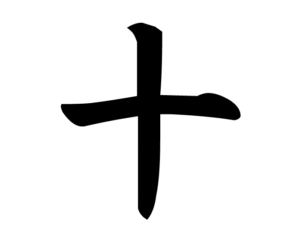
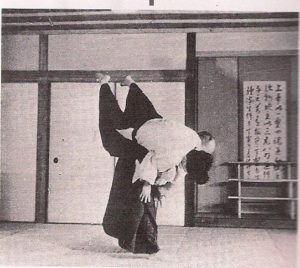
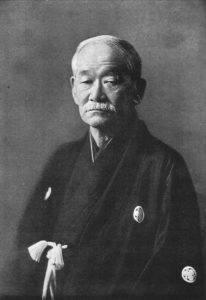


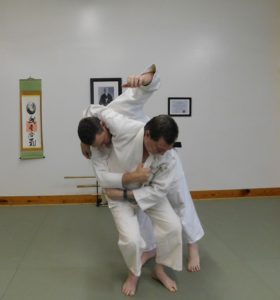


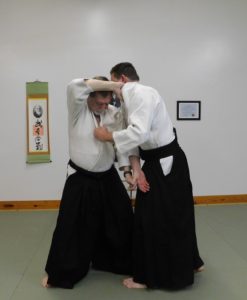
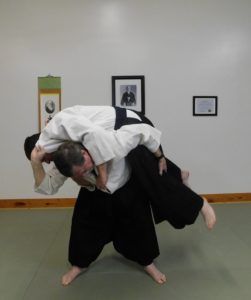
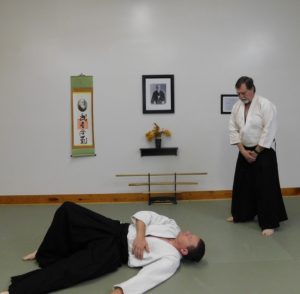
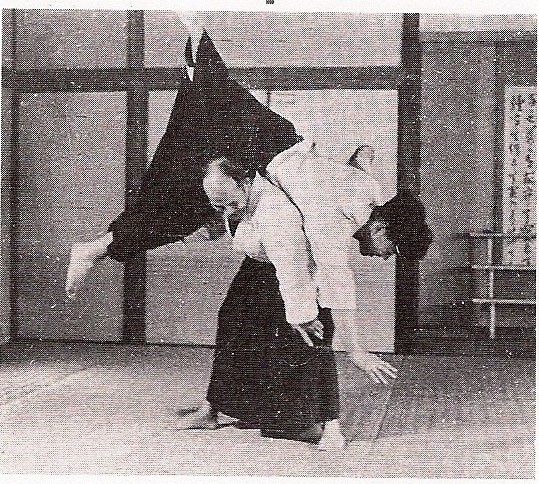
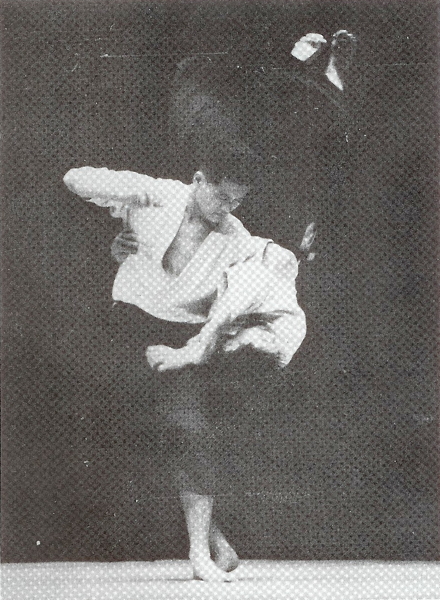
Will Gable
Sensei Amdur, thank you for this insightful, intrinsic study of Aikido and Judo, I am looking forward for your new book listed in the post, this was almost a book in itself, thank you, Will Gable
Kristoffer Lawson
I realise this post is already a few years old but you may be interested to know that in Takuma Hisa’s and then Amatsu’s line of DR, the koshinage that Ueshiba demonstrated is also taught. In particular I asked about this very koshinage from a club in Helsinki, Finland who had formed close relationships with Amatsu, and teach that particular line (Tokimune and Kondo have, as I understand it, built their own curriculum around ‘aiki budo’). They confirmed they teach this koshinage (and proficiently performed it!).
Now it’s worth remembering that Ueshiba was a leading teacher of DR for some time. In particular with Hisa’s line. So it’s still possible that Takeda Sokaku did not teach it to Ueshiba. We may never know, but I’m curious enough to see if there might be more to the story.
It’s a lovely koshinage though!